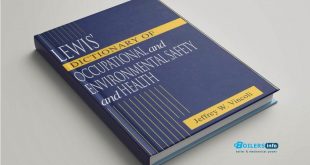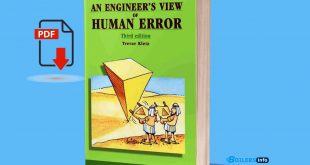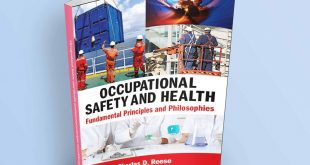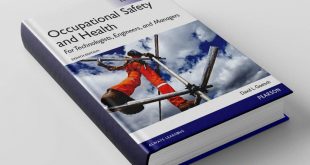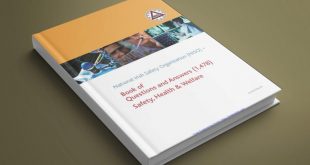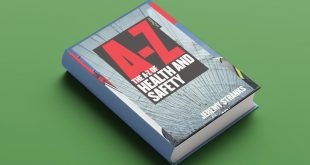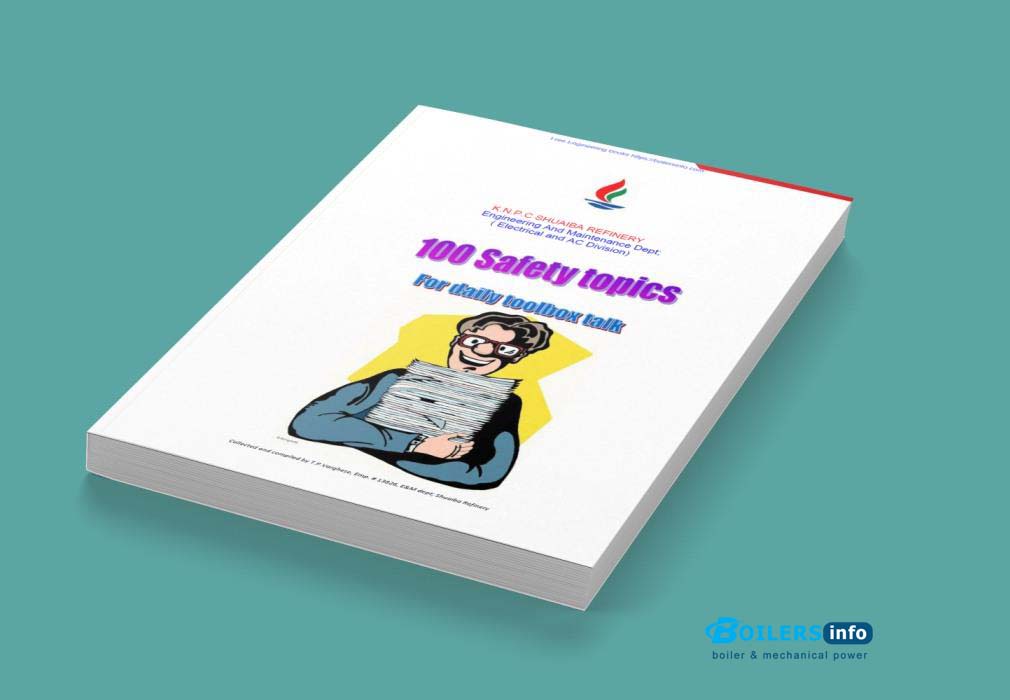
100 Safety Topics: A Quick Guide for Awareness
What is Fire – A rapid oxidation process with heat, light, and smoke; knowing the fire triangle (fuel, heat, oxygen) is key.
Confined Space – Limited access areas with potential toxic atmospheres or engulfment hazards.
Classes of Fires and Extinguishers – Fires are classified A to D and K; use the right extinguisher type accordingly.
Chemical Pneumonitis – Lung inflammation from inhaling chemicals; prompt medical care is vital.
Using Fire Extinguishers – Remember PASS: Pull, Aim, Squeeze, Sweep.
Importance of Sealing Conduits – Prevents fire spread, pests, and air leaks in electrical and plumbing systems.
Class “D” Fire Extinguishers – Specifically for combustible metals like magnesium and titanium.
First Aid Lesson – DR.ABC – Danger, Response, Airway, Breathing, Circulation – basic emergency response steps.
Pyrophoric Iron Fires – Iron sulfide can ignite spontaneously when exposed to air; control with inerting.
Hazards of Excavation – Risks include cave-ins, gas leaks, and underground utilities.
Electrical Area Classification – Dividing areas based on explosion risk; zones or divisions guide equipment selection.
Flashback Arrestors – Prevent flame from traveling back into gas lines; crucial in oxy-fuel systems.
Effects of Electric Shock – Ranges from mild tingling to fatal cardiac arrest; always de-energize before work.
Hazards of Asbestos – Inhalation leads to lung disease and cancer; proper PPE and controls required.
Work Permit System – Ensures authorization and hazard control for non-routine jobs.
Weather Change – Sudden shifts can affect safety, especially for outdoor or electrical work.
Proper Use of Portable Ladders – Set on firm ground, maintain three-point contact, never overreach.
Vehicle Safety – Seatbelts, defensive driving, and regular checks are life-saving practices.
Checklist for You – Pre-job safety checklists help identify hazards early.
“Take Time” – Slowing down to assess risks prevents costly mistakes.
Safety Attitudes – A proactive mindset and peer support drive incident reduction.
Oxygen/Acetylene/Fuel Gas Cylinder Safety – Store upright, keep valves closed, check leaks.
Back Safety – Lift with legs, not the back; avoid twisting while lifting.
Safe Handling of Inert Gases – Though non-reactive, displacing oxygen in confined areas can cause asphyxiation.
Hydrogen Sulphide – Toxic and flammable; use detectors and proper ventilation.
Heat Stroke – Medical emergency; rest, hydrate, and cool the person immediately.
Horseplay – Fooling around at work can cause serious injuries.
Driving – A Full Time Job – Avoid distractions; focus on road conditions.
When a Phone Call Can Be Fatal – Distracted driving or working while using phones increases risk.
Control of Ignition Sources – Sparks, flames, and heat sources must be controlled in flammable zones.
Temporary Connections – Often less safe; must be inspected and managed carefully.
Types of Injuries – Ranges from cuts to fatalities; prevention is key.
Important Terminologies – Knowing safety lingo aids communication and compliance.
Electrical Standards – Follow NEC, IEC, or local codes to prevent hazards.
Your Hands – Use gloves, keep clear of pinch points, and respect machinery.
Line of Fire – Always identify where you could be struck, crushed, or caught.
Office Safety – Trips, poor ergonomics, and fire risks need attention.
Material Handling Injuries – Use aids like dollies and hoists; avoid manual lifting when possible.
Hazards of Hand Tools – Keep tools maintained, use the right one for the job.
Motion Control – Guards, signage, and programming prevent unexpected movements.
Hazards of Power Tools – Always inspect cords, wear PPE, and follow the manual.
Material Safety Data Sheet (MSDS) – Provides hazard and handling info for chemicals.
PPEs – Personal protective equipment is your last line of defense.
GFCI – Ground Fault Circuit Interrupters prevent electric shocks in wet areas.
Negligence Kills – Ignoring procedures often leads to accidents.
No Shortcuts to Safety – Quick fixes can cause long-term harm.
Prevent Eye Injury – Wear safety glasses or face shields as required.
Pedestal Grinders – Use tool rests, guards, and eye protection.
Static Electricity – Can ignite vapors; grounding and bonding are essential.
Hazards of Plastic – Toxic fumes when burned; handle and dispose of properly.
Unsafe Acts and Conditions – Leading indicators of accidents; report and correct them.
Scorpion Stings – Treat as medical emergencies in high-risk regions.
Ways to Succeed – Consistency, awareness, and training breed safety success.
Safety and Scaffolds – Inspect before use; ensure guardrails and planking.
Near Misses – Learn from them to avoid actual incidents.
A Sleeping Giant – Unrecognized hazards can suddenly cause major incidents.
NFPA’s Hazard Rating Diamond – Color-coded system showing chemical risks.
Precautions of Rain – Wet surfaces, electrical contact, and reduced visibility increase hazards.
Housekeeping – Clean work areas reduce slips, trips, and fire risks.
Snake Bites – Stay calm, immobilize the area, and seek immediate care.
Lockout-Tag Out (LOTO) – De-energize and isolate equipment before servicing.
Saws and Grinders – Use guards and face protection; never bypass safety.
Radiation and Effects – Limit exposure to ionizing or non-ionizing sources.
Fall Protection and Prevention – Harnesses, guardrails, and awareness save lives.
Compressed Air – Never direct at people; use proper nozzles.
Hurry Up Can Hurt – Rushing increases mistakes and injuries.
Driving Inside the Refinery – Follow posted signs, speed limits, and right-of-way rules.
Dangers of Jewellery at Work – Can get caught in machinery; remove before work.
Health Hazards of Lead Exposure – Causes neurological and developmental damage.
Tips to Reduce Stress – Exercise, breaks, and open communication help.
Lightning and Thunder – Seek shelter; avoid metal and open areas.
Arc Flash Hazards – Wear arc-rated PPE; perform electrical risk assessments.
First Aid – Immediate help can prevent worsening of injuries.
Machine Guards – Never remove them; they prevent contact with moving parts.
Biological Pollution – Control mold, bacteria, and viruses through hygiene and ventilation.
Why Seat Belts – They save lives in crashes and sudden stops.
Noise – Prolonged exposure causes hearing loss; use ear protection.
Dangers of Loose Clothing – Caught-in machinery risks; wear fitted gear.
Computer-Related Injury – Ergonomic setup prevents strain injuries.
Myths and Facts About Safety Belts – Myths kill; facts save.
MIPP and Incident Reporting – Report near misses and incidents promptly for investigation.
First Aid – Electric Shock – Turn off power, call for help, perform CPR if trained.
Industrial Hygiene – Controls workplace exposure to harmful substances.
First Aid – Bone Fractures – Immobilize the limb, prevent movement.
Hazards of Electricity – Always respect voltage; treat all wires as live.
Burns and Scalds – Cool the area with water; never apply ointment immediately.
Heat Index – Combines temperature and humidity to gauge heat risk.
Expired Air Resuscitation – Mouth-to-mouth rescue breathing for unresponsive patients.
Compressed Gas – Transporting – Use caps, secure upright, never drag cylinders.
First Aid – Tooth Injury – Preserve tooth in milk; see dentist quickly.
Incident Pyramid – Many near misses precede a serious injury.
Controlling Stress – Organizational support and rest are crucial.
Ten Rules to Preserve Ten Fingers – Use tools correctly and stay focused.
Carbon Monoxide – Odorless, lethal gas; ensure proper ventilation.
Life-Changing Injuries – Can result from preventable accidents.
Understanding Ozone – Protects in the upper atmosphere, harmful at ground level.
Hot Work and Welding – Requires permits, fire watch, and PPE.
Hunt for Hazards at Home – Fire, electrical, and trip risks exist at home too.
Safety is a Lifestyle – It’s not a rulebook, it’s a mindset.
Continuous Improvement – Safety evolves through feedback and innovation.
 Boilersinfo Boiler and Mechanical Power Digital Library
Boilersinfo Boiler and Mechanical Power Digital Library
